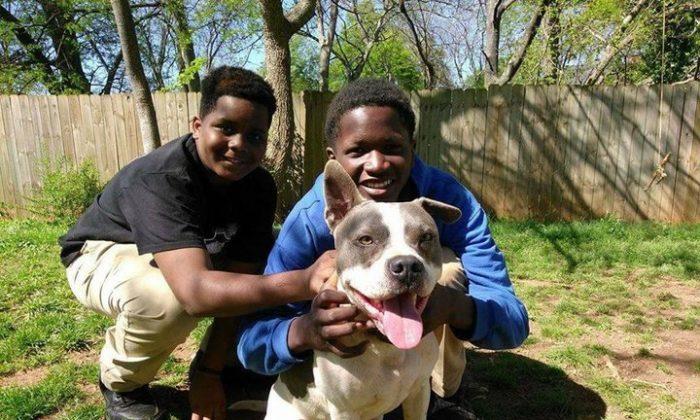No family is immune to the opiate epidemic---not even a tightly-knit one from a close community rooted in Christian faith.
Parents like to believe their children could never get mixed up with drugs. However, families in the United States are being impacted by the disease of addiction at an alarming rate. Travis and Shelly Bornstein, of Hartville, Ohio, know this reality all too well.
Unlike other families privately dealing with the pain accompanying drug use, this husband and wife are no longer dwelling in darkness. They are dedicated to breaking the stigma of addiction.
Not only are they openly sharing about their son Tyler, but they are earnestly working to ensure other people’s loved ones can connect with lifesaving resources needed for full recovery.
This fall, the Bornsteins broke ground on a project in Northeast Ohio, further developing a concept still new to the country which sheds light on the need for long-term solutions to the crisis sweeping the nation.
A Loving Start
Travis and Shelly got together in the eighth grade. While he went off to serve his country, Shelly waited for her man to return.Right after Travis completed his commitment with the Marine Corps, the couple purchased a home just two blocks from where their support campus will be located, in the Village of Lakemore, Ohio.
They were blessed with an early Christmas gift on Dec. 23, 1990, when their child, Tyler Wilson Bornstein, was born. Little Tyler was walking at 9 months, swimming with water wings by his first birthday, and able to do push-ups by the time he was 5. In the years that followed, Tyler continued to flourish.
The Bornstein family lived happily, actively involved in church, school, and their community. The abilities of the couple’s three children were recognized, especially the skills displayed by Tyler, an honor student who excelled at every sport he tried.
“He was strong and very talented in the game of golf. He also was a very loving and compassionate kid,” Travis said to The Epoch Times. “His future was bright.”

The Disease Begins
When Tyler was 11, his right elbow required surgery. The courageous child was prescribed an opioid pain medication to take during recovery.A repeat surgery was needed on the arm he broke four times, and Tyler, then 18, began taking opioids for a second time, upon the recommendation of a doctor.
Sadly, still young, Tyler became hooked on that pain medication, which eventually led him to heroin. The Bornsteins searched for help and prayed for hope.
Shelly, a nuclear medicine technologist, recalled it took months to locate a facility that would care for Tyler; his treatment appeared to be beneficial.
Upon completion, Tyler, who graduated high school Magna Cum Laude, enrolled at Walsh University, of Canton, Ohio, earning an academic and athletic scholarship. He also took second place in a bodybuilding contest in April 2013.

Tyler’s Relapse
Following his bodybuilding award, the disease of addiction resurfaced. Tyler was in Florida when he hit rock bottom once again.His parents located a treatment option there, and Tyler spent six months in a sober living program. Unfortunately, the help may not have been as extensive as needed. Upon coming back home, Tyler struggled again.
His name was on a waiting list for a state rehabilitation program when Travis and Shelly received news that brought indescribable grief. Tyler’s body was found on a vacant lot in Akron on Sept. 28, 2014. Only 23, he died from a heroin/fentanyl overdose, tragically ending his six-year fight to get well.
The individual who used with Tyler that evening decided to leave him in a field while he was experiencing overdose symptoms, instead of calling for medical assistance.
“It was the worst thing that could happen to us, as parents,” Shelly said.

Understanding Addiction
The nationally-ranked Cleveland Clinic lists addiction as the top mental health issue in the United States today---a chronic, often relapsing brain disease, causing compulsive use of harmful substances.According to the National Institute on Drug Abuse, more than 72,000 U.S. residents died from a drug overdose in 2017. In the year prior, Ohio led the nation in drug overdose deaths, with the state department of health recording 4,149 lives lost.
Before Tyler’s death, Travis, President of Teamsters Local No. 24 in Akron, regrettably did not understand his son’s drug dependency as a disease.
“We were the average middle-class family, raising our children with morals and values. You can’t believe it is happening to your family,” he explained.
Travis and his wife often felt isolated and ashamed, as many parents feel while helplessly watching their child wrestle with the stronghold of opioids.
Making a Difference
Travis and Shelly educated themselves on data regarding effective treatment, researched the gaps existing in medical treatment today, and decided to provide the right care. They agreed to make a difference, following the lead of their youngest daughter, who began giving presentations on the opioid epidemic at high schools around Northeast Ohio.
One of the facts the family shares: four out of five heroin users started with prescription opioids, like Tyler. The couple began efforts to hold pharmaceutical companies responsible for the drug epidemic. In March 2016, they created Breaking Barriers, a nonprofit program focused on raising awareness to the harm of opioid use.
The Bornsteins went on to establish Hope United, a nonprofit organization that encompasses Breaking Barriers and three additional faith-based support programs to offer hope, healing, and restoration.
A Purposeful Plan
Shelly often would go to where Tyler’s body was found and spend time there in prayer. One evening, at the site, she had an idea: construct a treatment center at the location.Hope United then began fundraising to build Tyler’s Redemption Place.
A few months later, at the Teamster Union National Convention in Las Vegas, Nevada, Travis spoke about the relapse prevention facility he and his wife felt led to establish and shared Tyler’s entire story. At that time, the Bornsteins had $10,000 for the creation of the center. After Travis completed his presentation in front of 5,000 delegates, $1.4 million was pledged for the project.
“It was an unbelievable experience,” he said.
The original property Shelly wanted proved not large enough to house the complete campus envisioned. However, officials from Summit County, Ohio, offered the Bornsteins a large property that once housed a hospital for treating tuberculosis. This site now will be used to fight the epidemic of today: the opioid crisis.
Even though all the funding needed for construction has not been secured, the family, with faith contributions will continue to come in, broke ground on Tyler’s Redemption Place on Sept. 28: the four-year anniversary of their son’s death.
“We wanted something good to come out of the worst day of our lives,” Shelly said.

Extending Acceptance
Tyler’s Redemption Place will care for those fighting addiction for an entire year, while displaying compassion, and never judgment. The facility will take a holistic approach to address the pain driving addiction. While traditional treatment lasts one to three months, the couple found that is not enough time for complete recovery.“Tyler could not get a full year of sobriety under his belt,” Travis said.
For those who receive short-term treatment, relapse takes place 70 percent of the time, he said.
“We found it takes the brain from one to two years to heal from an opiate,” Travis explained.
Design of Center
The campus-like setting will emphasize whole body wellness and feature a gym, art space, library, theatre, and café. The goal is to assist individuals in long-term sobriety and mental stability after their initial treatment in an inpatient facility.“We will teach coping and life skills and new ways to relax,” Shelly said.
Yoga, acupuncture, meditation, cardio workouts, and more will be offered.
“We want to create a community to encourage success,” Travis said. “We want to love them right where they are.”
This desire comes from a conversation Travis had with Tyler.
“He didn’t think he deserved to be OK. He thought he let our family down,” Travis said. “At Tyler’s Redemption Place, we will always give you a second chance, and we will never stop believing in you.”
Hope United’s 17,000 square foot facility comes with a $3.7 million price tag; the goal is to be operational by 2020.
“We are stepping out in faith to raise the funds to make it happen,” Shelly said. “We will keep sharing our story.”
At times, the Bornsteins wish this had not been their journey.
“Neither one of us could live with what happened without trying to do something about it, though,” Travis said.
“We share in a positive way,” Shelly concluded. “Sometimes, all it takes is one person to speak hope.”





